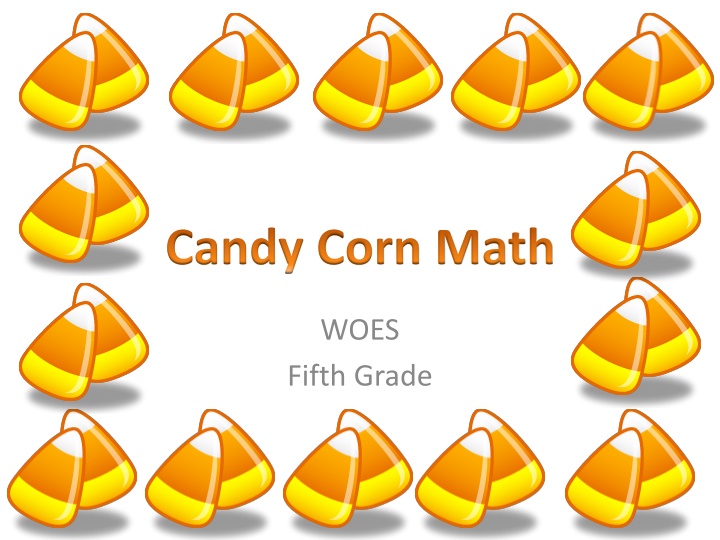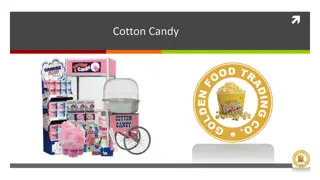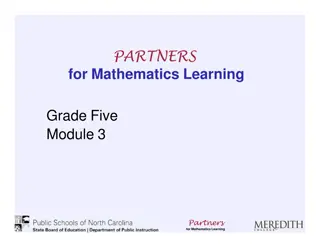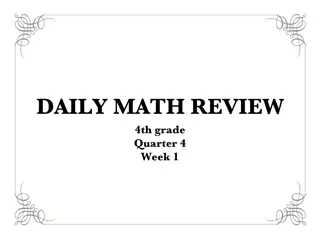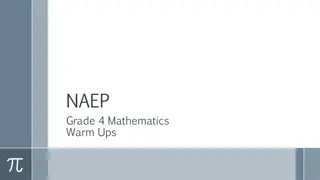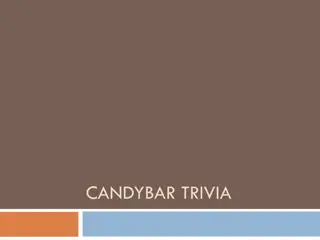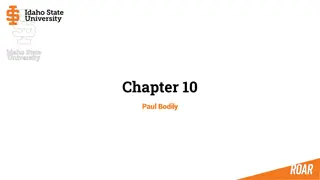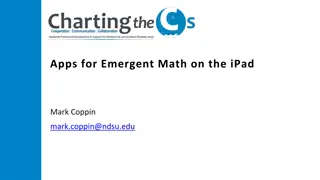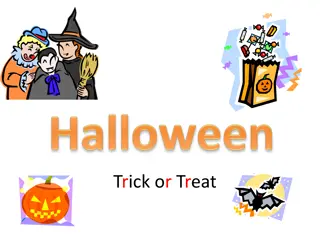Candy Corn Math and Measurement Activities for Fifth Grade
Explore fun and educational activities involving candy corn and measurement in the fifth-grade classroom. From understanding benchmarks to measuring length, weight, and mass, these hands-on tasks engage students in practical math concepts. With stations focusing on length and weight using both standard and metric systems, students also estimate and calculate costs. Dive into capacity measurements with liquid and dry substances, enhancing learning through interactive experiences.
Download Presentation

Please find below an Image/Link to download the presentation.
The content on the website is provided AS IS for your information and personal use only. It may not be sold, licensed, or shared on other websites without obtaining consent from the author.If you encounter any issues during the download, it is possible that the publisher has removed the file from their server.
You are allowed to download the files provided on this website for personal or commercial use, subject to the condition that they are used lawfully. All files are the property of their respective owners.
The content on the website is provided AS IS for your information and personal use only. It may not be sold, licensed, or shared on other websites without obtaining consent from the author.
E N D
Presentation Transcript
Candy Corn Math WOES Fifth Grade
Benchmarks A benchmark is a familiar number used as a point of reference. You can use a benchmark to determine a reasonable estimate. If one piece of candy corn is: Height: in. cm. Weight: oz. kg. Length: in. cm. Remember your base 10 rules: n x 1= 1, n x 10= 10, n x 100= 100
Measurement Charts Length Standard System METRIC System 1 kilometer = 1,000 meters 1 foot (ft. or ') = 12 inches (in. or ") 100 centimeters 1 yard (yd.) Measures of Length = 36 inches (in.) 1 meter = 1 yard (yd.) = 3 feet (ft.) 1 10 millimeters 1 mile (mi.) = 5,280 feet (ft.) = centimeter 1 mile (mi.) = 1,760 yards (yd.)
Reading a Ruler Standard: http://www.rsinnovative.com/rulergame/ Metric: http://www.askmrcscience.net/sitebuildercon tent/sitebuilderfiles/readingametricruler.pdf
Station One: Length You will need a ruler that measures standard and metric systems. 1. How many centimeters long is 1 candy corn? 2. How many cm. long are 10 candy corns? 3. How many cm. long is 100 candy corns? 4. How many candy corns are needed to reach 6 in.? 5. Estimate the length of all of your candy corns in cm. and in inches. 6. What is the actual length of all of your candy corns in cm. and in in.?
Measurement Charts Weight/ Mass Standard System METRIC System 16 ounces (oz.) 1 milligram = 0.001 gram 1 centigram = 0.01 gram 1 decigram = 0.1 gram 1 kilogram = 1000 grams 1 pound (lb.) = 2,000 pounds (lb.) 1 ton (T.) =
Station Two: Weight/Mass You will need a scale and weights that measures using the metric system. 1. What is the weight of 10 candy corns in grams? 2. How many candy corns would equal 1 kilogram? 3. If each candy corn costs $0.02, what would be the cost of one kilogram? 4. If each candy corn costs $0.02, what would be the cost of 200 grams?
Measurement Charts Capacity Liquid Dry 1 cup (c.)= 8 fluid ounces (fl. oz.) 1 pint (pt.)= 2 cups (c.) 1 quart (qt.)= 4 cups (c.) 1 quart (qt.)= 2 pints (pt.) 1 gallon (gal.)= 4 quarts (qt.) 1-1/2 tsp.= 1/2 tbsp. 3 tsp. = 1 tbsp. 2 tbsp. =1/8 cup 4 tbsp. =1/4 cup 8 tbsp. =1/2 cup 16 tbsp. = 1 cup
Station Three: Capacity You will need a tsp., tbsp., measuring cup and a pint jar. Estimate first then check. 1. How many candy corns will fit in a teaspoon? 2. How many candy corns will fit in a tablespoon? 3. How many candy corns will fit into a cup? 4. How many candy corns will fit into a pint? Now, use your Math knowledge : 5. How many candy corns will fit into a quart? 6. How many candy corns will fit into a gallon?
Finding Range, Mean, Median and Mode Range refers to the distance Between . The Range refers to the distance between the highest and lowest value within a set of numbers. Strategy: Order your data from greatest to least. Mean means Average . Mean = the average of a group of numbers. Strategy: Add all numbers then divide by the number of entries. Median means is in the Middle . Strategy: Order the numbers from least to greatest. Mode represents the most Popular The Mode is the number that appears the most frequently within a set of number. Strategy: What number do you see the most often?
Station Four: Finding Range, Mean, Median and Mode You will need a stopwatch. 1. Time each member of your group to find out how long it takes to eat one candy corn. DO NOT RUSH! Record your answers in minutes and seconds. 2. Find the range of the times. 3. Find the median of the times. 4. Find the mode of the times, if there is one. 5. Find the mean of the times. 6. Make a stem and leaf plot to represent your data.
Fractions: Review The top number the Numerator, it is the number of parts you have. The bottom number the Denominator, it is the number of parts the whole is divided into. Hint: Denominator- down -ominator
Station Five: Fractions 1. Divide the candy corns into two equal groups. What is of the total number? Divide the candy corn into four groups. How many are in each: a. How many are in 2/4 ? b. How many are in ? c. How many are in 4/4 ? Divide the candy corns into sixths. a. What does 1/6 equal? b. What does 2/6 equal? c. What does 3/6 equal? d. What does 4/6 equal? e. What does 5/6 equal? f. What does 6/6 equal? 4. What fractional parts had the same number of candy corns? 2. 3.
Station Six: Word problems Try to write each problem using a variable. 1. addition 2. subtraction 3. multiplication 4. division 5. inequality Try to solve each other s problems.
